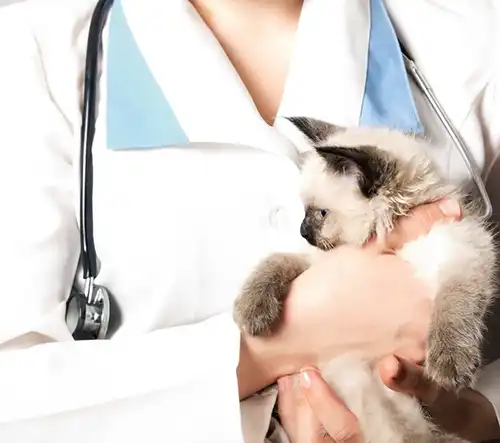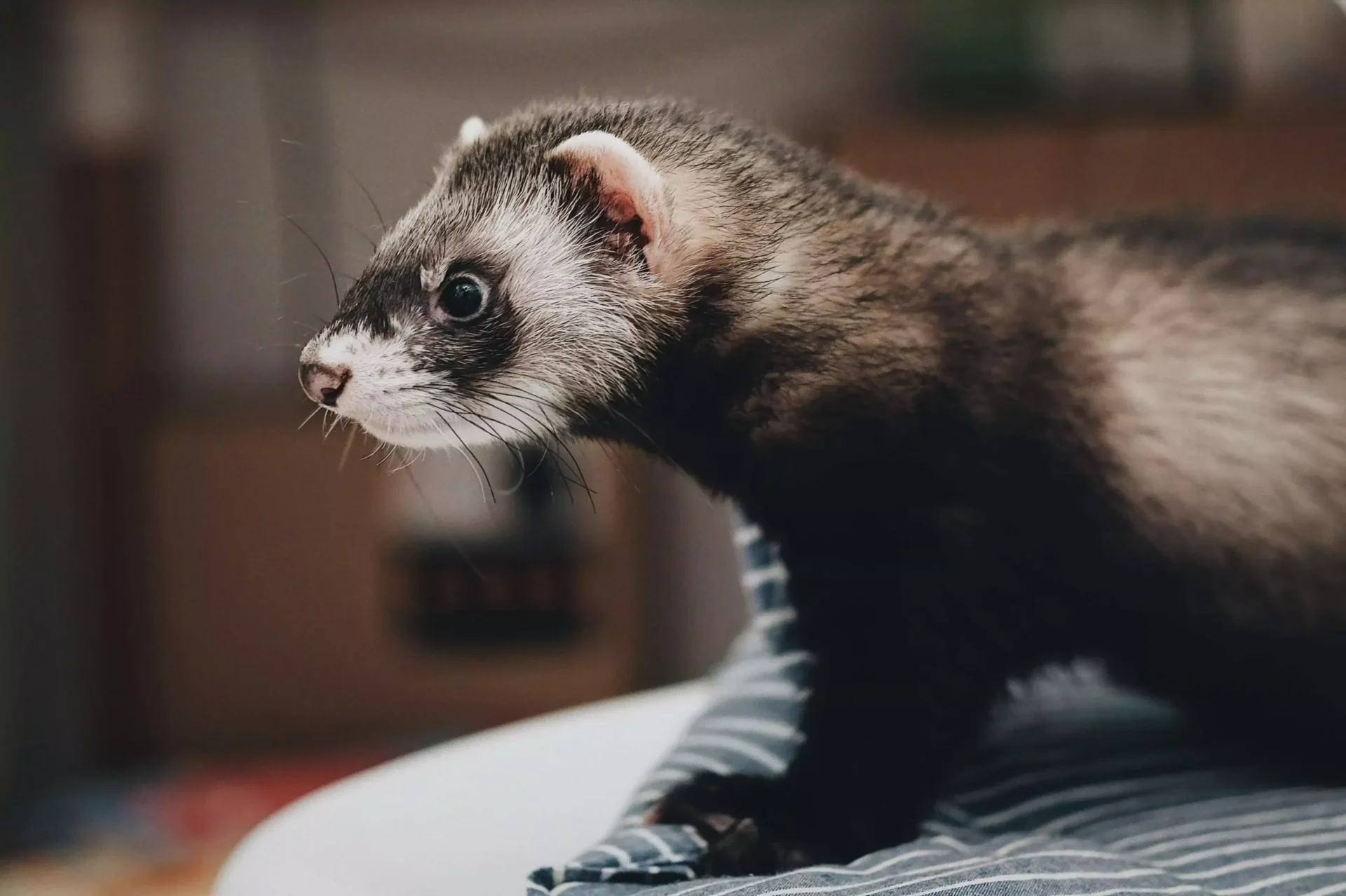World Hamster Day is April 12th! Hamsters are a popular pet for children, and for plenty of reasons. They are gentle, simple to care for, cute, and require little space, all of which make them ideal animal companions for children. An Orlando, FL veterinarian places Hammy in the spotlight.
Basics Hamster Facts
Hammie is an adorable and charming critter native to Europe and Asia. There are about 20 hamster breeds. The European hamster, sometimes known as the common hamster or black-bellied hamster, is the largest. These guys can grow to be 8 to 11 inches long and weigh as much as a pound. That’s a lot for a rodent! The Roborovski hamster, frequently referred to as the desert hamster, is the smallest in the family. These cute furballs will only grow to be a couple of inches long!
Some of the most popular pet breeds are Syrian, Russian Dwarf Campbell, and Roborovski.
What Kind Of Cage Should I Get My Hamster?
Purchasing a suitable cage is half of the battle when it comes to hamster care. To ensure optimum airflow for your pet, choose something with a mesh or screen top. However, it must have a solid floor; wire floors are hazardous and will not support the substrate.
You will need to include a little hiding spot, as well as toys and accessories. Ask your vet for specific advice.
Do Hamsters Need Toys?
Toys are very important for pets—even the little ones! Chew toys are essential for your pet’s oral hygiene. If Hammie doesn’t wear his teeth down, he may have major dental problems. Many of your pet’s chew toys can be made from inexpensive household objects such as plain paper or cardboard. There are plenty of great ideas available online. Don’t give your little buddy any items that have sharp or small parts and/or strings or threads. Consult your Orlando, FL veterinarian for help.
Do Hamsters Make Good Kids’ Pets?
Children frequently choose hamsters as pets. As previously said, they might be fantastic choices for a variety of families. However, there are a few things to think about.
- You’ll need to keep Hammie in a room that stays comfortably warm, even in winter. If the little guy gets too cold, he may try to hibernate. This can be very dangerous for pet hamsters!
- Hamsters can carry viruses, germs, bacteria, and parasites, just like any other animal. Carefully wash your hands before and after handling your pet or his possessions. (If you’re getting a hamster for your child, you may need to supervise this process.)
- Young children should never interact with Hammie without adult supervision. You’ll need to teach your children to hold Hammie gently and appropriately, and never tug his tail or fur.
- Hamsters are nocturnal creatures, which means they are most playful at night. Hammie might wake up your child at night if you put him in a child’s room.
- If your child is still very small, have them sit or kneel while holding their little friend. If the hamster falls or jumps, he will not fall very far.
Should I Adopt More Than One Hamster?
You can, but you’ll almost certainly require separate cages. Syrian hamsters, the most popular pet hamster, should always be housed alone. They are polite with others but despise their roommates. Other types of hamsters, however, can have companions. Do much research and consult with your Orlando, FL veterinarian before adopting one.
What Are The Indicators Of Disease In Hamsters?
You’ll need to keep an eye out for any signs of illness, just like you would with any other pet. Little Hammie can get a variety of health conditions, including respiratory problems, diarrhea, abscesses, proliferative ileitis (wet tail), and skin abnormalities.
Keep an eye on your tiny pal. The more familiar you become with little Hammie, the easier it will be to recognize signs that something is amiss.
Some of the things you’ll need to watch for include lack of appetite, lumps, bumps, lesions, fur loss, weight loss, not drinking water, limping, red feet, fur color changes, diarrhea, dirty/wet bottom, sneezing, coughing, dull, red, or watery eyes, lethargy, wheezing, changes in stool, and overgrown teeth.
If you spot any of those symptoms, contact your veterinarian right away.
What Should I Feed My Hamster?
Hammie’s menu should be based mostly on commercial foods, with safe vegetables and tiny amounts of fruit as supplements. You should consult your veterinarian for exact suggestions, but a good rule of thumb is to feed 80% pellets, 15% vegetables, and 5% fruits and treats. You’ll also need to get your miniature furball a water bottle, which must be cleaned and replenished every day.
Be sure to stick with safe options. Spinach, broccoli spears, Romaine lettuce, dandelion greens and artichokes, carrot tops, cauliflower (in limited quantities), sweet potato, squash, and yellow peas are also safe vegetables. You can feed apples, bananas, strawberries, and pears to your small companion. For snacks, you can offer little pieces of egg or cheese, cooked chicken or turkey, or dog biscuits.
It’s also critical to understand what isn’t safe for your small companion. This list includes garlic, chocolate, alcohol, rhubarb, onion, garlic, junk food, and citrus, to name a few. Ask your vet for more information.
Some foods are safe on occasion but should not be eaten on a daily basis. You should also be cautious with seeds. For example, hamsters adore pumpkin seeds. Other types of seeds, such as apple and pear seeds, are dangerous.
It’s worth noting that hamsters are expert beggars who can often persuade their owners to give them tasty treats. They then keep these goodies for later and go back to pretending they are starving. (Fun fact: Hammie’s name is derived from the German word “hamstern,” which means “hoard”. Pay attention to portion proportions and don’t be fooled by that cute face!
Should I Groom My Hamster?
Hammie is really clean. You will not need to bathe him. He’ll self-clean, rather like a cat. (This is, of course, really amusing to watch.)
How Do You Spoil A Hamster?
We think that all animals, large or tiny, should be safe, comfortable, loved, and happy. Making Hammie happy doesn’t need a big investment of time or money. Even minor adjustments can have a tremendous impact!
Here are some recommendations:
- Runabouts
- Mazes
- Supervised Free Time (use a contained, safe, area)
- Hamster garden (Use only safe, vet-approved plants)
It’s also important to just make sure your little buddy feels loved and safe at all times. Pay attention to Hammie. Talk to him, pet him, and let him hang out on you if he likes.
How Do I Develop a Bond with My Hamster?
You will need to allow your tiny companion some time to feel secure. Allow him to adjust before attempting to hold him. After a few days, you will be able to gently pet him and talk to him. Never scoop Hammie up from behind or while he is sleeping, and never grasp him by the tail. This may (understandably) alarm the small fellow.
Make An Appointment At Your Orlando, FL Animal Hospital
Do you have any questions about hamster care? Contact us, your Orlando, FL veterinary hospital at any time. We are always happy to help!






!Social Media Icons